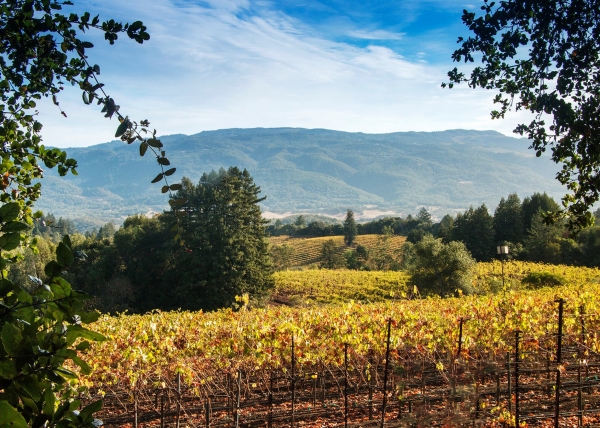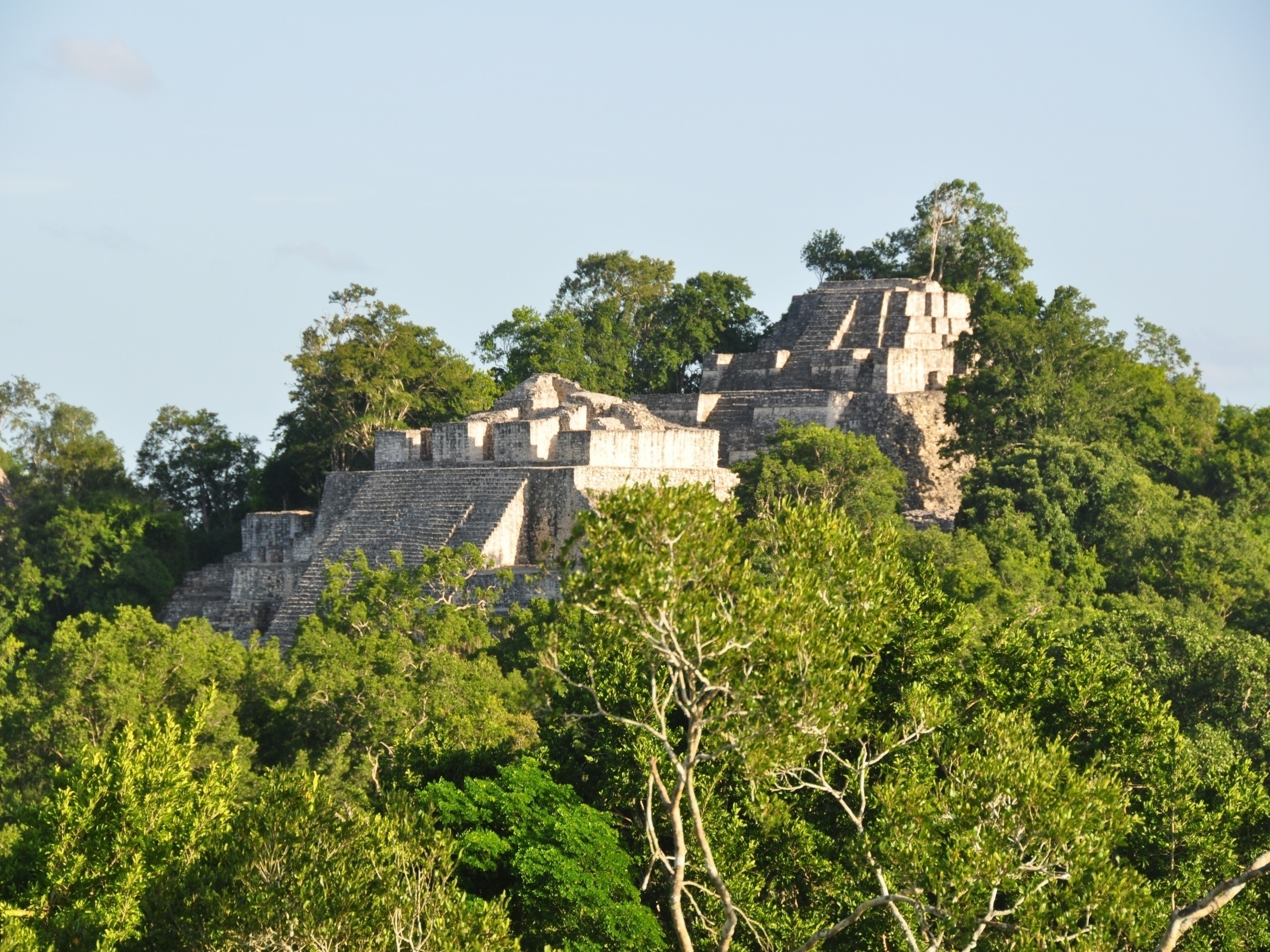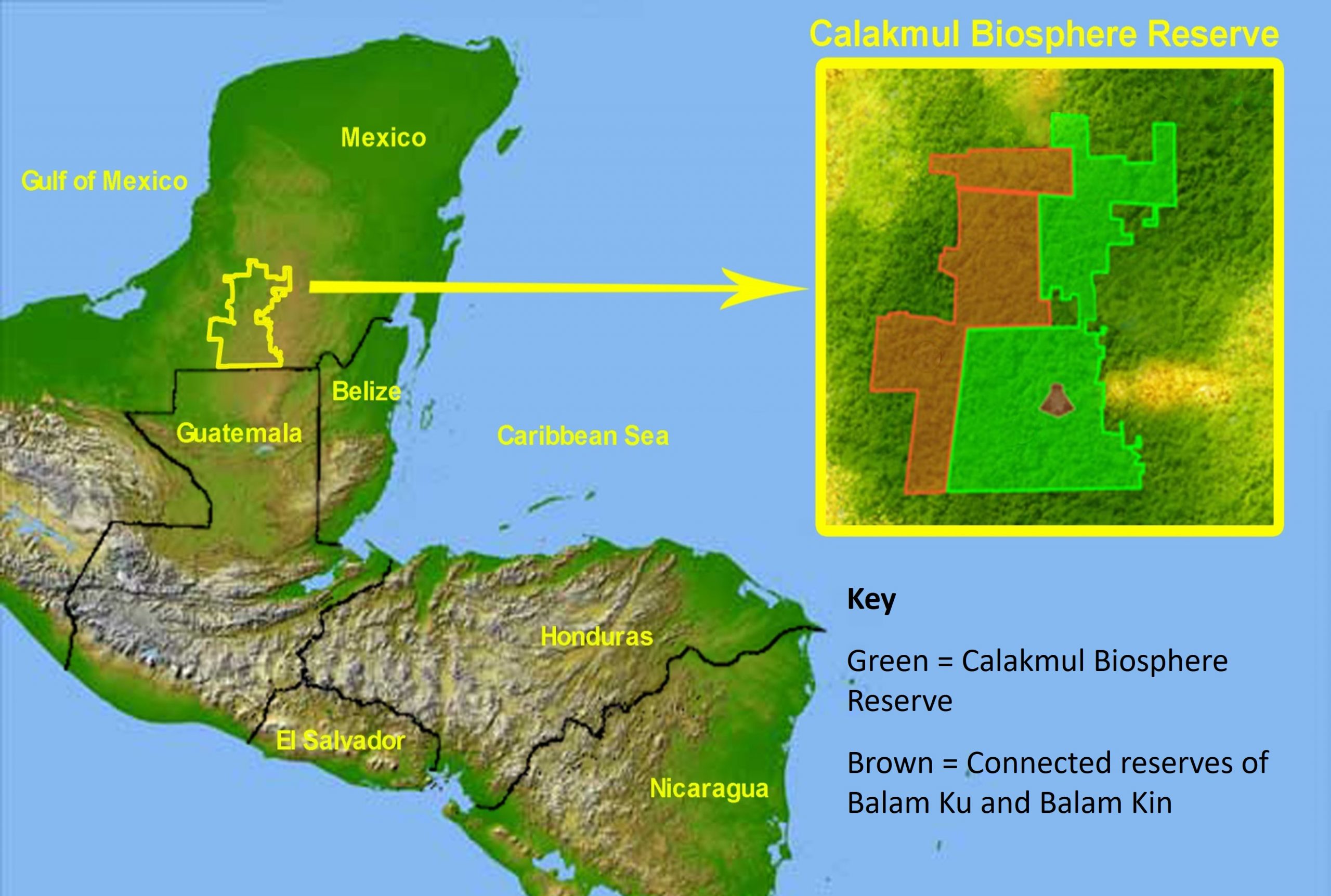

 In addition to housing a large collection of ancient Mayan ruins, the Selva Maya is a large expanse of forest containing multiple protected areas in Mexico, Belize and Guatemala, making it one of the largest remaining strongholds of endangered mammals such as spider monkeys, jaguar and tapir and is an important biological corridor for a wide variety of species. UK-based conservation research company, Operation Wallacea (Opwall), is currently running biodiversity monitoring and conservation efforts based in the Calakmul Biosphere Reserve (CBR) located in the Yucatan Peninsula in the northern extremity of the Selva Maya. CBR is a UNESCO World Heritage Site of both culture and nature – a prestigious award that only 32 reserves in the world have received.
In addition to housing a large collection of ancient Mayan ruins, the Selva Maya is a large expanse of forest containing multiple protected areas in Mexico, Belize and Guatemala, making it one of the largest remaining strongholds of endangered mammals such as spider monkeys, jaguar and tapir and is an important biological corridor for a wide variety of species. UK-based conservation research company, Operation Wallacea (Opwall), is currently running biodiversity monitoring and conservation efforts based in the Calakmul Biosphere Reserve (CBR) located in the Yucatan Peninsula in the northern extremity of the Selva Maya. CBR is a UNESCO World Heritage Site of both culture and nature – a prestigious award that only 32 reserves in the world have received.
Over the last 10 years, the Calakmul Biosphere Reserve has experienced a notable reduction in rainfall, which has impacted on the abundance and distribution of fauna in the reserve, and has severely impacted on the livelihoods of indigenous Mayan communities in the buffer zone of the reserve who rely on crop based agriculture for subsistence and income. In an attempt to secure more reliable income, many farmers have switched from crop based agriculture to livestock farming, which obviously has a devastating impact on biodiversity due to the extensive deforestation associated with creating pasture.
In conjunction with the la Comisión Nacional de Áreas Naturales Protegidas (CONANP) who manage the reserve and the Mexican conservation NGO, Pronatura Peninsula de Yucatan (PPY), Opwall has helped to develop ecotourism and sustainable honey production projects with local Mayan communities in the buffer zone of the reserve as sustainable alternatives to livestock farming. Opwall monitoring data on birds, bats, herpetofauna, butterflies, ungulates, felids and primates are being used to evaluate the impact of climate change and changing rainfall patterns on the abundance, ranging and diversity of fauna. Local communities that collaborate in the project with the Opwall team of international students learn transferable skills to strengthen their ecotourism projects,and monitoring data are used to assess the efficacy of a range of sustainable development projects, including community-based tourism, with buffer zone communities designed to minimise forest encroachment. This research has enabled Operation Wallacea to undertake targeted conservation programmes, such as restoring the local aguada (ponds and watering holes) ecosystems, protect vulnerable species from extinction, to help prevent human-wildlife conflict and provide sustainable sources of income for buffer zone communities.
a) Political/management support
The Operation Wallacea monitoring project in CB is an excellent example of collaboration between the Mexican federal government (CONANP), Mexico conservation NGOs (PPY), International NGO (Opwall), local government (Calakmul municipality) and indigenous Mayan communities to provide valuable monitoring data to inform reserve management decision, while at the same time providing income, education and training for local communities in the form of ecotourism. Regular management meetings between all relevant parties can identify the needs of local communities and the difficulties they have with living in a reserve that is suffering notable changes to the climate and the impact of this changing climate on the fauna we are aiming to protect as a means of finding tangible solutions to problems that provide sustainable income for communities that are in harmony with the rules and regulations of the reserve. As the project is ongoing and has no fixed end date, we are also to adapt and change strategies over time as needed.
b) Financial support
The Operation Wallacea model leverages student tuition fees to fund long-term biodiversity monitoring and conservation in remote areas of the world. Over 3000 high school and university students travel with Opwall yearly (300+ to the site in Mexico) to gain experience working alongside academics and researchers conducting critical biodiversity surveys in the field. This funding system enables financial security for the ongoing monitoring project that could not be obtained from conservation grants. Each summer Opwall provides substantial income for buffer zone communities either from direct employment as guides, cooks and transportation providers or in the form of investment in community lead ecotourism project where Opwall and PPY have funded the building of field camps, provided training in tourism and accommodation management and then become the summer “clients” of these community cooperatives where payments are made to the community per person per night for using the accommodation facilities. As the Opwall monitoring project runs over the summer, communities can use the field camps and trained guides and cooks for a range of ecotourism activities during the peak tourism season from December to April
c) Educational support
For many years prior to the start of the Opwall monitoring project, PPY have provided environmental education and a series of training courses for members of local communities to become qualified tour guides. The Opwall project then provided a more advanced level of training in which local guides could join our summer project as interns to have intensive practice in English skills and learn more in depth information about the ecology and conservation of the species that we work with. Following completion of the internships, local guides can then be employed a members of the science staff during the Opwall summer project and use the transferable skills they have learned to become specialist nature guides for the reserve, primarily to run specialist bird watching tours that are popular and generate significant income for the guides during the peak of tourism activity outside of the Opwall season. Similarly, staff contracted to work as cooks with Opwall learn about food hygiene, how to cater for a wide range of dietary requirements, including coping with food allergies that better prepares them for catering for tourists at other times of the year.
Ecotourism only really works in areas that already have a general “traffic” of tourists and efforts to establish ecotourism projects in the more remote parts of the reserve have not been successful. The general idea that if you build ecotourism attractions, people will visit them only works in specific circumstances. Consequently, ecotourism should be divided into two categories, direct ecotourism activities and indirect benefits from ecotourism. Direct activities such as offering tours or accommodation only work well in areas where there is a natural flow of tourists. For those communities in more remote areas is it better to focus on “products” that can be created in these areas and then sold in the more touristic areas in hotels and restaurants. Products such as organic beauty products, honey, spicy chili sauces and handicrafts can be created in remote villages and then transported to areas where they may be sold to tourists and therefore communities earn money from tourism despite never actually seeing any tourists. This model of indirect benefits of ecotourism has been used by PPY for many years, but with Opwall we are currently expanding this model to include the very remote communities in the southern extremities of the reserve.
The Operation Wallacea model of conservation research has proven to be effective for both leveraging further funds toward conservation in biodiversity hotspots, and for incentivizing local communities to protect unique species and ecosystems. The model is made successful through partnerships between Opwall academics, local NGOs, indigenous communities and local and federal governments committed to conservation in local biodiversity hotspots and the student volunteers play a pivotal role in collecting data and providing funding for the long-term research program.
Collaborative projects of this nature are key to successful conservation where ecotourism plays an important role, but it not the only strategy used to provide sustainable livelihoods for communities living in, or adjacent to, protected areas.
The COVID-19 pandemic has clearly demonstrated that ecotourism should never be used as the ONLY sustainable source of income for communities living in protected areas. CBR was closed to the public for almost the entire year of 2020 and only open in a limited capacity for most of 2021. Income generated from tourism during this period has been close to zero and communities have been heavily reliant on other sustainable development projects, particularly organic honey production and aloe vera production where products are sold both nationally and internationally. The strategy of Opwall and PPY has always been to include ecotourism as one element of a multifaceted strategy for sustainable livelihoods in CBR and the global pandemic has reiterated how important it is to not “put all your eggs in one basket” when it comes to using ecotourism for conservation purposes.
© Linking Tourism & Conservation (LT&C) 2019
We are grateful that you support the work and mission of LT&C! We accept donations through Credit Card, PayPal or international bank transfer:

Donate through Credit Card
Please click the Donate button and then choose your PayPal account
Bank details:
Cultura Sparebank
Pb. 6800, St. Olavs plass
N-0130 Oslo
Name: Linking Tourism & Conservation,
Account no.: 1254 05 95168
IBAN: NO8712540595168
BIC/SWIFT: CULTNOK1
Routing BIC: DNBANOKK
Please mark payments with your name and/or email address
Sign up for an LT&C membership by filling in the details below.
Would you like your LT&C-Example/Initiative to be listed on our website? Please fill in the form below.